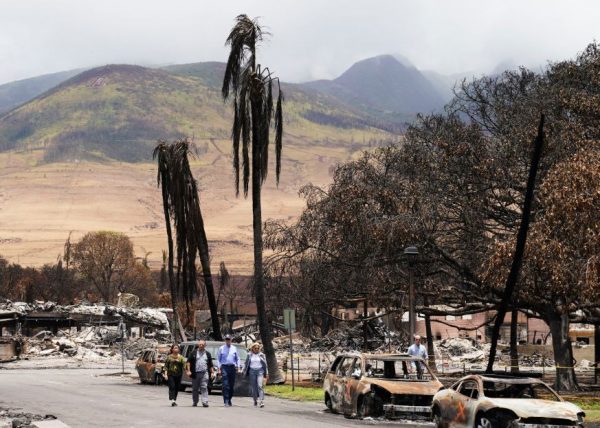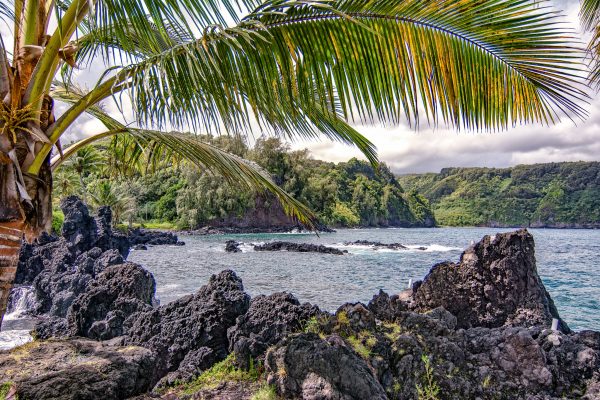
A year after devastating wildfires killed more than 100 people and destroyed the historic town of Lahaina on the west side of Maui, it remains unclear whether travelers are welcome.
The ongoing uncertainty has cost Hawaii nearly $1 billion in lost revenue, which has historically relied on tourism for 70 percent of every dollar in its local economy.
Officially, all of Maui, except for the Lahaina Burn Area, is open for business as of November 1. However, arrivals in the first half of 2024 are down about 25% year-over-year, with 1.1 million visitors, compared to about 1.5 million in the first half of 2023. Spending is also down from $3.47 billion in the first half of 2023 to $2.64 billion for the first half of 2024;
Businesses on the west side of the island were particularly hard hit. Lahaina is the gateway to the area, including the popular Kaanapali resort, but there’s only one way to get there. Technically, the burn area represents 3.4 square miles of the island’s total area of 727 square miles. But even if they stay in the untouched west coast resorts, many travelers don’t want to drive through the burn area.
The gradual reopening has also left many people confused about which parts of the island they’re allowed to visit. Josh Hardgrove, general manager of the Westin Maui Resort & Spa, Kaanapali, told Bloomberg that occupancy has dropped 30% to 40% at his $160 million hotel and other properties on the west side.
“People still feel guilty about coming to Maui to celebrate in front of workers who lost everything,” Hargrove says. “That’s where we’re stuck right now.”
Even locals who were once critical of the tourism industry are now hoping to see a recovery. Others believe closing the west side was the right decision to allow the island to begin recovery and clean-up efforts, but it’s time to move on.
Great time to visit
The irony is that from a tourist’s perspective, there has never been a better time to travel to Maui in years. The beaches are calm, the island resorts are clean, and businesses have never been more welcoming to tourists.
State and federal programs to house evacuees in hotel rooms have ended, and the government is now completing the process of moving remaining families from hotels to long-term housing.
Although hotels are not offering discounts as a result of the fires, the average daily rate was $563 in June, more than $100 a night more expensive than any other Hawaiian island, and guests can find incentives like a free third night or future credits.
Nearly a dozen hotels have used the time since the fire to complete renovations and improvements. Resorts are also highlighting volunteer opportunities and hosting pop-up events to make it easier for guests to support local businesses affected by the fires.
There are still challenges.
It’s not just the drop in demand that’s crushing businesses: It’s also the shortage of workers, exacerbated by rising housing costs after the fire. For people who work as waiters, taxi drivers and other tourism-related jobs, moving to the mainland in search of steady work and affordable housing has sometimes proven easier than continuing to wait on Maui.
The biggest problem remains misinformation and how it prevents people from visiting at all.
A new legislature regulating short-term rentals could help, and Maui Mayor Richard Bessen has introduced proposals to remove more than 7,000 vacation rental units — more than half the island’s inventory — and return them to locals by January 2026.
Mysterious messages
The biggest problem remains misinformation and how it deters people from visiting at all. Some mistakenly believe that the entire island burned down.
Seeing an entire city on fire is an image that is hard to erase from the minds of tourists. And even as West Maui began a phased reopening on Oct. 8, official messaging about off-limits areas remained vague.
By contrast, the messaging has been complicated. In June, the Hawaii Tourism Authority issued a statement saying Lahaina was closed to the public, noting that every address on the west side of the island shares a ZIP code with Lahaina. It updated the announcement a week later, but not before it caused confusion that overwhelmed businesses on the west side.
What is clear is that much has changed on the ground since the weeks after the disaster, when emotions ran high and tourists faced difficult ethical choices. But the messages that travel further afield have not made the same progress.
source: after that

“Hipster-friendly coffee fanatic. Subtly charming bacon advocate. Friend of animals everywhere.”







More Stories
F-16 crashes in Ukraine – pilot dies due to his own error
Namibia plans to kill more than 700 wild animals to feed starving population
Endurance test for EU-Turkey relations and Ankara with Greece and Cyprus